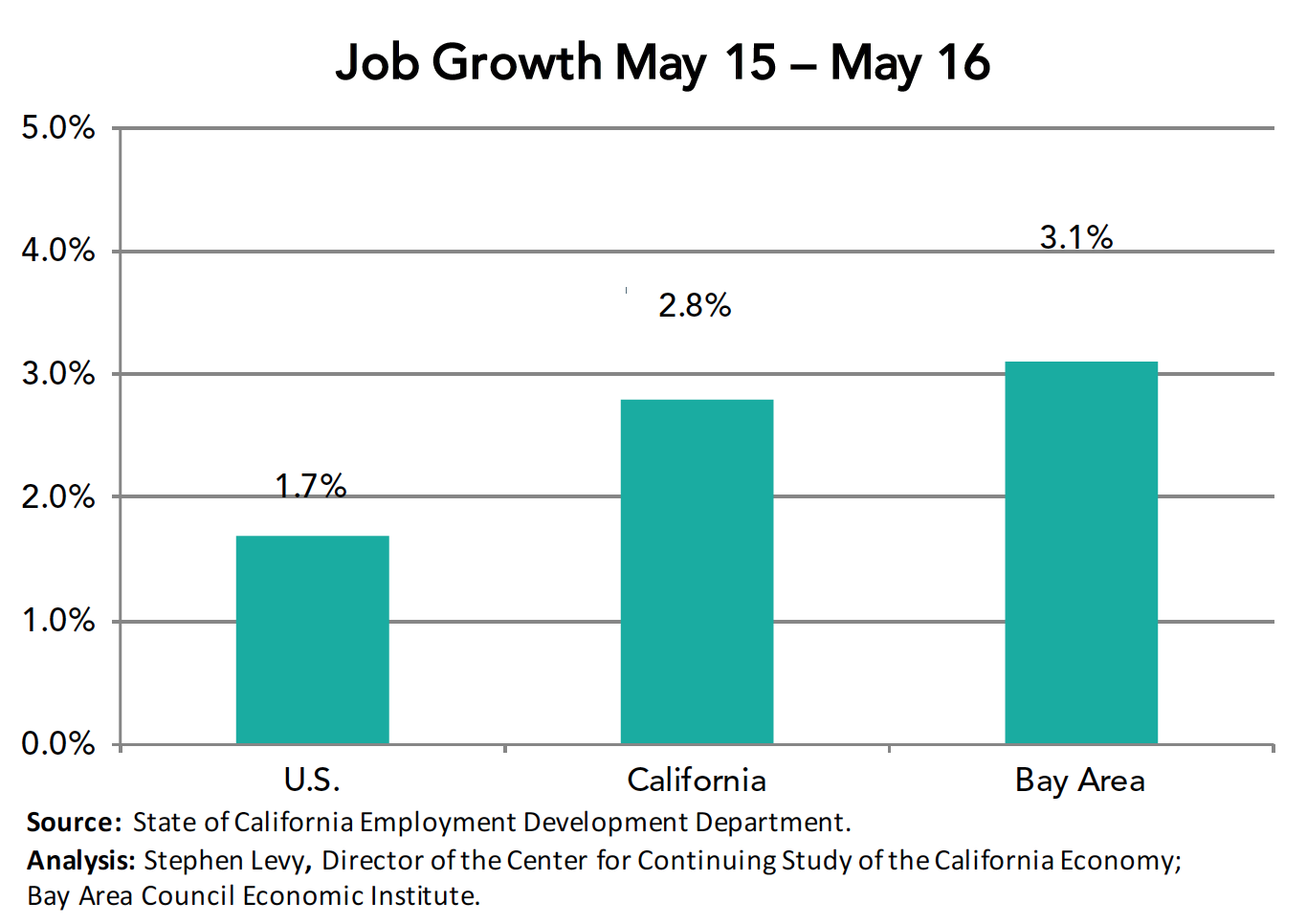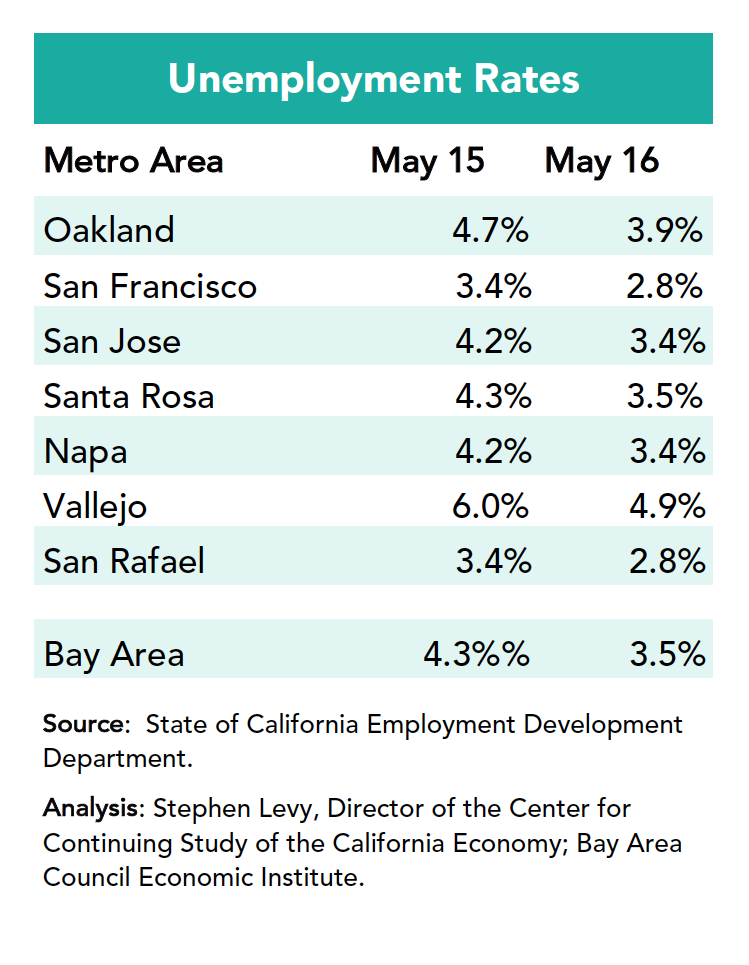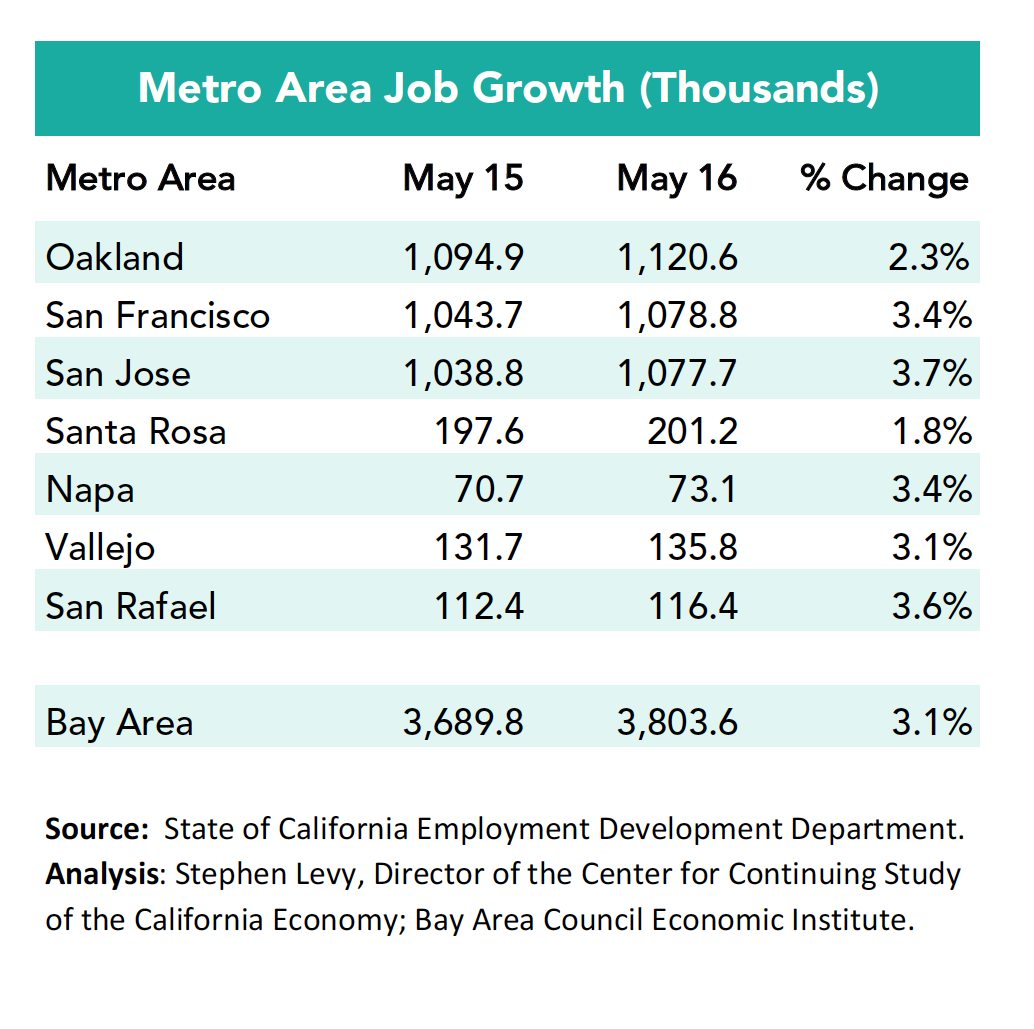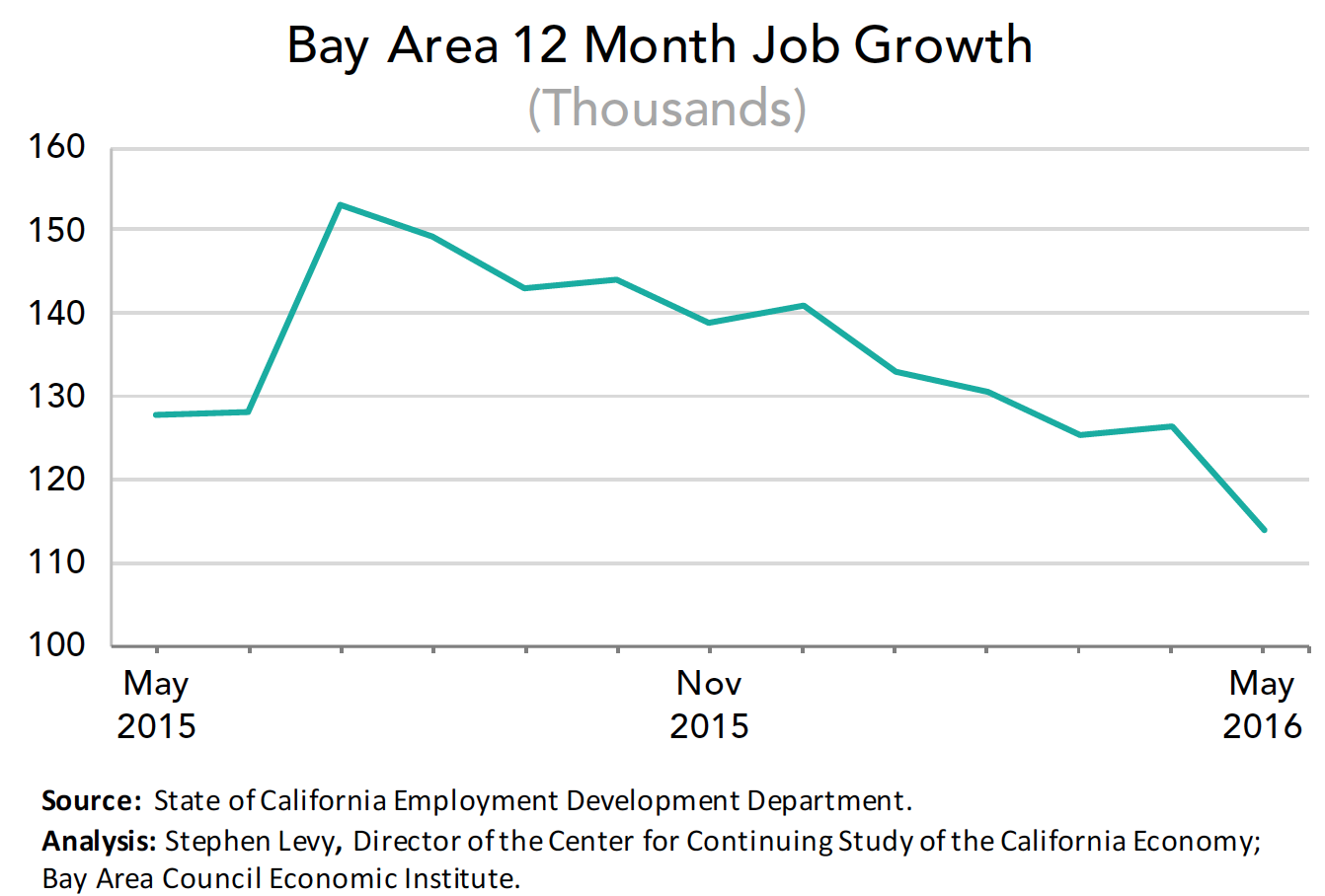
Today the California Employment Development Department (EDD) released job estimates for May 2016. Here are the highlights
Bay Area Job Growth Slows but Continues to Outpace the State and Nation
The region added 113,800 jobs between May 2015 and 2016 for a gain of 3.1% compared to 1.7% for the nation and 2.8% for California. The pace of growth has slowed from the mid-summer 2015 highs although year over year gains remain robust. The state jobs report showed a gain of 15,200 jobs in May compared to 38,000 for the nation-an unusually high share of U.S. growth. For April and May the state added 85,200 jobs or more than 50% of the national gains.
The job gains continue to reduce unemployment rates while the labor force continues to add workers. Unemployment rate declines were seen in all areas.

Year over year job growth has slowed slightly in the region though remaining above 3% in region and above the national average in all metro areas.

While the year over year job gains have declined slightly from mid 2015 peaks, they remain in very healthy territory with no signs of a significant loss of competitive advantage. Job growth rates in 2016 are likely to be the peak going forward as baby boomer retirements are slowing labor force growth.

![]()
The state job and unemployment news was also good showing that the recovery has spread beyond the Bay Area. The California unemployment rate declined to 5.2% the lowest since May 2007 and close now to the national 4.7% rate. The number of unemployed residents have been cut from more than 2 million to just under 1 million during the recovery.
The continuing job growth now that unemployment rates have fallen will bring new residents to the region as will the growing need to replace retiring workers.
New state Department of Finance population estimates show an increase of 78,300 residents between January 1, 2015 and 2016—once again far outpacing the gain in housing units. Both the region and Santa Clara County have been the population growth leaders in California since 2011.
All of these trends underscore the importance of policies to increase housing and make sure that housing and transportation challenges do not undermine the region’s still vibrant economic competitiveness.